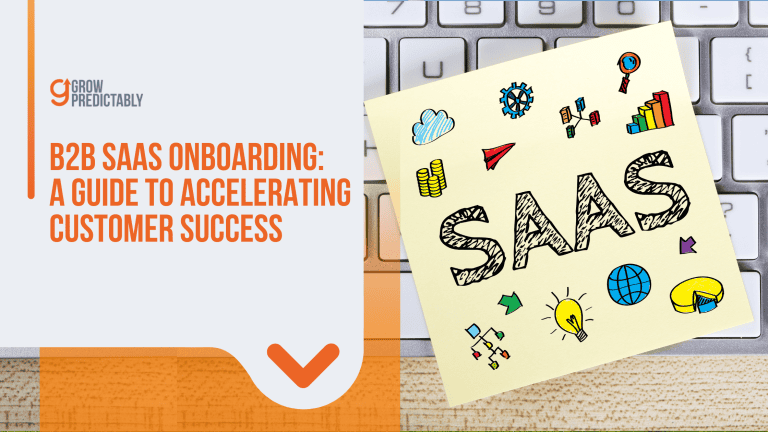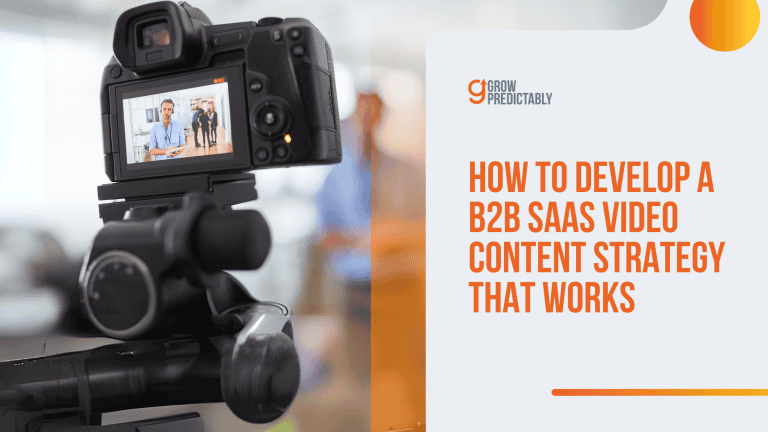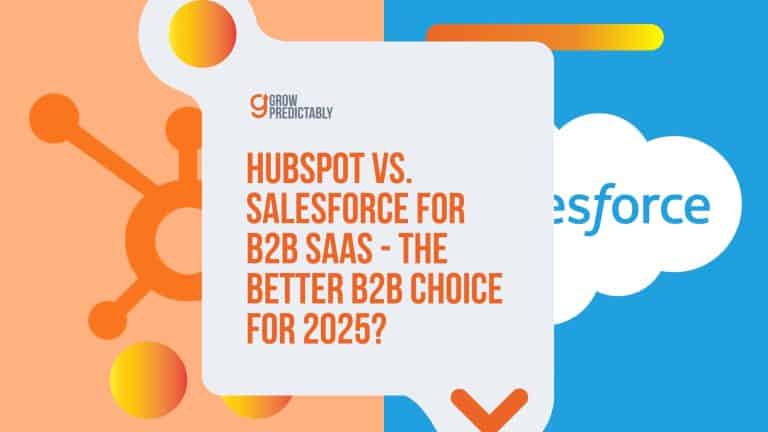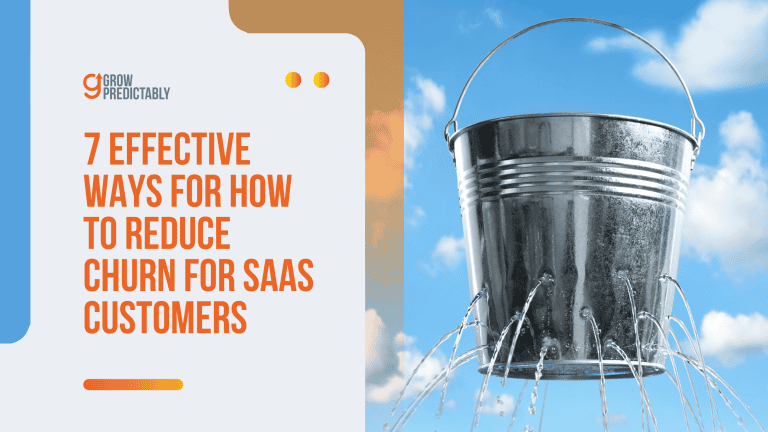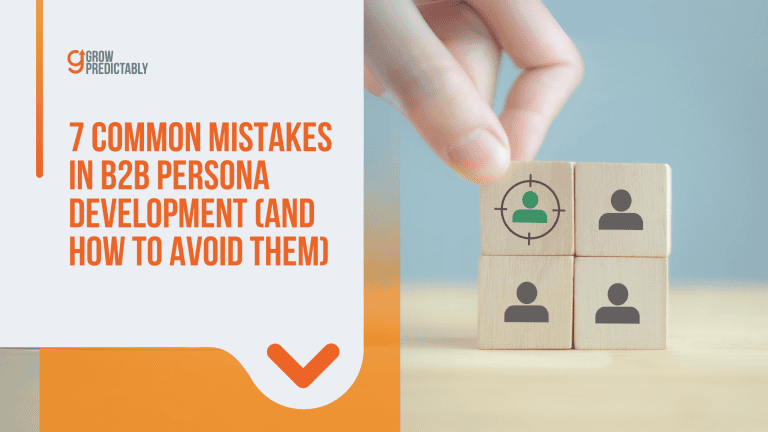Effective Micro SaaS Lead Magnets for B2B Leads Boosting
You’re told to throw in a lead magnet, collect emails, and watch the magic happen.
But when it comes to B2B SaaS, the magic happens with the right content at the right stage.
Understanding this distinction will set you apart.
Micro SaaS lead magnets, like specific ROI calculators or niche templates, do more than gather leads—they build trust and excite prospects.
But how do you determine the right lead magnet to use? And how can you maximise the impact of each lead magnet?
Read through and find out how!
Understanding the Role of Micro SaaS Lead Magnets in B2B
Want to boost your B2B sign-ups?
Smart lead magnets make lead generation easier for Micro SaaS companies every day.
Let me show you how.
Lead magnets trade valuable resources for contact details from the target audience – but they do more than collect emails.
They help generate leads and guide prospects through the Customer Value Journey (CVJ) from awareness to excitement.
Think of lead magnets as your 24/7 lead generation team.
They identify problems, showcase solutions, and nudge prospects toward that “aha moment” when they realize your Micro SaaS solves their pain points.
Let’s break down what works (and what doesn’t):
Winning Lead Magnets:
- ROI calculators that show exact cost savings
- Industry-specific templates ready for immediate use
- Step-by-step checklists solving common challenges
Ineffective Lead Magnets:
- Generic newsletters without clear value
- Broad whitepapers lacking actionable insights
- Basic PDFs found everywhere online
Real success stories prove this approach works:
A B2B automation tools company created an ROI calculator showing prospects their potential savings.
Sign-ups jumped 35% as decision-makers saw concrete numbers backing their investment.
One productivity Micro SaaS offered customizable workflow templates targeting their niche market.
Demo requests rose 40% because prospects could test-drive the solution’s value upfront.
The secret?
Match your lead magnet to each CVJ stage:
- Awareness: Educational content showing you understand their challenges
- Engagement: Interactive tools demonstrating your expertise
- Subscribe: Valuable resources worth trading contact info for
- Convert: Proof your solution delivers results
- Excite: Quick wins creating product champions
Speaking of quick wins, we’ll explore exactly how to pick the perfect lead magnet type for your specific audience next.
But first, remember this: The best lead magnets don’t just generate leads – they start relationships.
Ready to create lead magnets that convert?
Let’s dig into choosing the right format for your Micro SaaS in the next section.
Identifying the Right Type of Lead Magnet for Micro B2B SaaS Brands
There are several B2B micro SaaS brands on the market today. Some new, some established.
Using the right lead magnet can dramatically boost engagement and conversions for these B2B micro SaaS brands.
Let’s explore how three existing micro B2B SaaS brands can benefit from tailored lead magnet examples aligned with their unique selling propositions and target audiences.
1. Toggl Track

Background: Toggl Track is a time-tracking app that helps teams log work hours efficiently and gain insights into productivity. It’s a favorite among freelancers, remote workers, and teams needing detailed time reporting.
Target Audience: Freelancers, remote teams, and small businesses.
Recommended Lead Magnets:
- Time Management Seminars: Hosting webinars to teach effective time management strategies and how Toggl Track can facilitate better productivity.
- Customizable Timesheet Templates: Offering free templates that users can tailor to fit their unique project needs, encouraging them to visualize Toggl Track’s features.
- Productivity ROI Calculators: Enabling users to calculate potential savings in time and costs by using Toggl Track’s time-tracking capabilities.
2. Baremetrics

Background: Baremetrics provides subscription analytics and insights, allowing SaaS businesses to make informed, data-driven decisions. It’s particularly useful for companies with subscription-based revenue models.
Target Audience: SaaS companies, financial controllers, and growth-focused startups.
Recommended Lead Magnets:
- Benchmarking Reports: Offering detailed industry benchmarks for SaaS companies, helping potential customers to compare their metrics and see potential areas for growth.
- Trial Data Demos: Providing prospects with limited-time access to a sandbox version of Baremetrics to play with sample data and see the insights they could gain.
- Financial Forecasting Templates: Giving away templates that help companies predict their revenue growth using key metrics, seamlessly integrating into Baremetrics’ features.
3. Quaderno

Background: Quaderno assists businesses with simplifying tax compliance by automating tax calculations and handling invoices. It’s designed for businesses operating globally or dealing with complex tax regulations.
Target Audience: eCommerce businesses, digital service providers, and freelancers handling international clients.
Recommended Lead Magnets:
- Tax Compliance Checklists: Delivering checklists that outline what businesses need to know about staying compliant with various international tax laws.
- Educational Whitepapers: Offering in-depth guides on the impacts of digital taxes and how automation can streamline processes, targeting finance departments.
- Interactive Tax Calculators: Allowing potential customers to input their business data and see how automation of tax tasks with Quaderno can save time and reduce errors.
These lead magnet strategies are designed to directly address the pain points and aspirations of each brand’s target audience, fostering stronger customer relationships and conversions.
By zeroing in on what makes each brand unique, these lead magnets align with their value propositions to capture qualified leads effectively, paving the path for successful lead generation.
Top 3 Lead Magnets Micro SaaS Brands Should Try
Selecting the right lead magnets can transform your B2B SaaS marketing by boosting lead generation efforts.
Our guide below highlights three powerful tools: calculators, cheat sheets, and case studies—each proven to enhance lead generation effectively.
Here’s why these resources are favorites among B2B SaaS providers and how your micro SaaS brand can utilize them to maximize impact and improve click-through rates.
| Lead Magnet | Why? | Tips for Maximization |
|---|---|---|
| Calculators | Engagement Drivers: Calculators are interactive tools that engage users by providing personalized answers to their specific queries, such as ROI or time savings. | Ensure calculators are easy to use and prominently feature them on your website pages with high traffic. Use CTAs like “Calculate your savings now!” to drive engagement and conversions. |
| Cheat Sheets | Quick Reference Tools: Cheat sheets offer swift access to essential information, like security protocols or feature comparison, which decision-makers appreciate. | Provide these as downloadable content in exchange for e-mail signup. Employ CTAs like “Increase Your [METRIC] with This Cheat Sheet Now” to encourage downloads and build your email list. |
| Case Studies | Proof of Success: Case studies demonstrate real-world applications and results, showcasing reliability and effectiveness, which builds trust with prospective clients. | Use a narrative focusing on problem-solving with quantifiable results. Strategically place them where prospects might have doubts, and use CTAs like “See how we’ve helped similar businesses succeed!” to boost credibility. |
Tools for Quick Creation
- Canva: Design professional templates
- Outgrow: Build interactive calculators
- Beacon: Create PDF guides
REMEMBER: Skip generic content! Your leads can Google basic information. Focus on your unique expertise and proprietary insights.
Quick Tips
- Match format to problem (calculators for financial decisions)
- Keep it actionable (templates over theory)
- Show immediate value (5-minute solutions)
- Test different formats (start with three types)
Now that you know what types of lead magnets generally work best for SaaS businesses, the next section will show you how to align them perfectly with your B2B buyer journey.
Get ready to turn those leads into customers!
Aligning Lead Magnets with the Customer Value Journey
Did you know, according to McKinsey and Co., 76% of B2B buyers expect personalized content at each stage of their journey? (Source)
Here’s the thing – your lead magnets must match where your prospects are in their buying journey or customer value journey.
Let’s make sure your lead magnets hit the mark every time.
Think of it like dating – you wouldn’t propose marriage on the first date, right?
The same principle applies to B2B lead magnets and their use in lead generation efforts.
Let’s break down each stage and match it with the perfect lead magnet:
1. Awareness Stage (They Know They Have a Problem)
Perfect Lead Magnets:
- Industry benchmark reports
- Quick-start checklists
- Educational blog posts
- Free tools
A cybersecurity Micro SaaS created a “Security Risk Assessment Checklist” that helped IT managers spot vulnerabilities.
This simple tool generated 450+ downloads in the first month because it solved an immediate need.
Focusing on industry benchmark reports, here’s one from OpenView, released in 2023.

This report provides comprehensive insights into key SaaS metrics such as ARR (Annual Recurring Revenue) growth rates, customer acquisition costs, and churn rates across various stages of company growth.
It helps SaaS businesses compare their performance against industry standards and identify areas for improvement.
2. Consideration Stage (They’re Exploring Solutions)
Perfect Lead Magnets:
- Product comparison guides
- Case studies
- ROI calculators
- Video tutorials
A CRM Micro SaaS built a “CRM Selection Matrix” comparing different solutions.
This helped prospects make informed decisions and increased demo bookings by 28%.
Now, let’s look at some popular lead magnet examples on the market today, particularly for ROI calculators.
Here’s one from Asana.
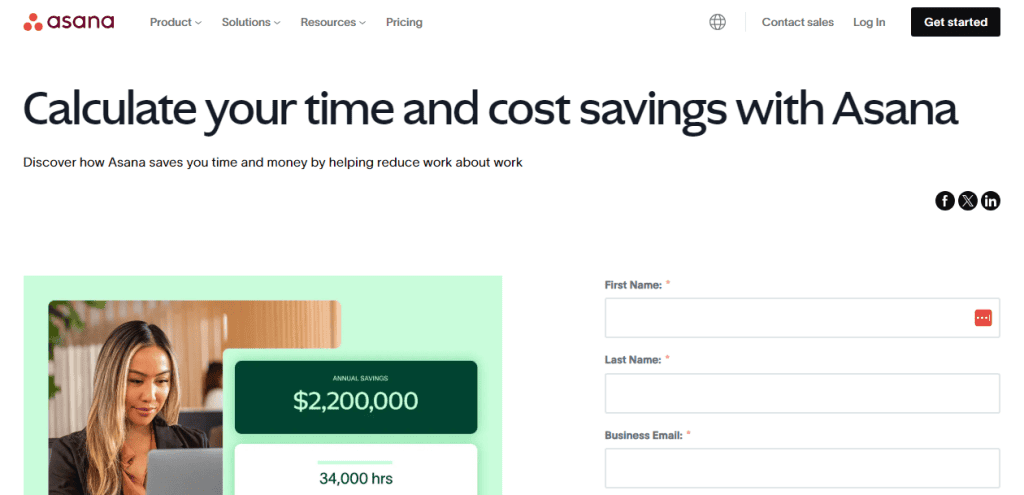
Asana’s ROI calculator is designed to help teams understand the economic impact of using Asana for project management.
It quantifies time savings and productivity enhancements, allowing companies to visualize how Asana can lead to improved project delivery and reduced operational costs.
3. Decision Stage (They’re Ready to Buy)
Perfect Lead Magnets:
- Free trials
- Live demos
- Implementation guides
- Consultation calls
A marketing automation Micro SaaS offered a “7-day Unlimited Access Pass” instead of a standard free trial.
This created urgency and boosted conversion rates by 35%.
Here’s an actual sample from Salesforce’s ‘Sales Cloud Implementation Guide.’

The Salesforce implementation guide offers detailed steps for setting up and customizing Salesforce CRM.
It includes guidance on data import, user training, and configuration tips to ensure businesses can fully leverage Salesforce to drive sales productivity and customer engagement.
Warning Signs Your Lead Magnets Are Misaligned
- Pushing demos too early
- Offering basic guides to advanced users
- Using generic content for specific problems
- Missing clear next steps
Quick Action Steps
- Map your current lead magnets to buyer stages
- Identify gaps in your content
- Create one new lead magnet for your weakest stage
- Test different formats and measure engagement
REMEMBER: The right lead magnet at the wrong time is still the wrong lead magnet.
Match your content to your prospect’s mindset, and you’ll see better conversion rates.
Ready to take your lead magnet strategy to the next level?
Let’s explore how to promote and nurture these leads effectively in our next section.
Promoting and Nurturing Leads with Micro SaaS Lead Magnets
Let me share something exciting – a Micro SaaS company increased its trial signups by 45% just by tweaking its lead magnet promotion strategy.
Ready to learn how they did it?
Your lead magnet success depends on smart promotion and consistent nurturing through the Customer Value Journey.
Let’s break down the proven tactics that work:
1. Attract Initial Interest
- Run targeted LinkedIn ads to reach decision-makers
- Create SEO-optimized landing pages highlighting your lead magnet’s value
- Partner with industry blogs for guest posting opportunities
2. Capture Engaged Visitors
- Display exit-intent popups offering your lead magnet
- Add chatbot messages promoting relevant resources
- Place strategic CTAs throughout your website content
3. Nurture New Subscribers
- Send welcome emails introducing your most valuable content
- Create automated email sequences sharing insider tips
- Segment subscribers based on engagement and interests
4. Drive the “Aha Moment”
- Share customer success stories showing real results
- Provide step-by-step implementation guides
- Offer quick wins through actionable worksheets
5. Convert to Paid Users
- Present limited-time trial offers
- Focus on your unique expertise and proprietary insights to generate creative lead magnet ideas
- Utilize feedback from existing customers to enhance exclusive premium features
Here’s what worked for successful Micro SaaS companies:
Company A increased demo requests by 32% by:
- Running retargeting ads to website visitors
- Using personalized landing pages
- Following up within 24 hours
Company B boosted trial conversions by 28% through:
- Segmented email nurturing sequences
- Regular check-ins via chat
- Clear next steps after each interaction
REMEMBER: passive promotion kills even great lead magnets.
Take action today by implementing these proven strategies.
Want to see faster results?
Focus on these quick wins:
- Set up retargeting ads this week
- Create an automated welcome sequence
- Add exit-intent offers to key pages
Companies that see the best results combine multiple promotion channels while maintaining consistent follow-up.
Start small, test what works, and scale your lead generation efforts by focusing on winners.
Ready to take your lead magnet promotion to the next level?
Let’s explore common mistakes to avoid in your lead magnet ideas in the next section.
Common Mistakes to Avoid When Using Micro SaaS Lead Magnets

Let’s talk about the mistakes that can derail your lead magnet’s success.
I’ve seen these blunders time and time again, but don’t worry – they’re all fixable!
Here’s what often goes wrong:
1. The “Set It and Forget It” Trap
Creating a lead magnet without a solid follow-up plan is like planting seeds and forgetting to water them.
Too often, businesses capture email addresses but fail to engage these prospects afterward, missing opportunities to build relationships.
Without consistent follow-up, your leads are likely to forget about you, causing valuable connections to go cold.
To prevent this, develop a strategic follow-up sequence designed to nurture leads and convert them into loyal customers.
Real Example:
A project management Micro SaaS created a beautiful template library, but saw only 2% conversion because they never contacted subscribers to generate leads after the download.
2. The “One Size Fits All” Error
Each prospect travels through different stages of the buyer’s journey, and using a single lead magnet for all stages is a missed opportunity to generate leads effectively.
Offering complex whitepapers to beginners can overwhelm them, while advanced users need more than just introductory content like free trials.
Tailoring your lead magnets to match each stage of the journey ensures that your message is relevant and impactful, ultimately leading to higher conversions.
Success Fix:
A time-tracking Micro SaaS tripled conversions by creating three different lead magnets for awareness (productivity checklist), consideration (ROI calculator), and decision stages (guided demo).
3. The “Data Desert” Problem
Without tracking lead magnet performance, you’re left in the dark about what’s working and what’s not.
Ignoring key metrics such as download-to-signup ratios or email open rates means missing out on valuable insights that could refine your strategy.
By analyzing these metrics, you can identify weak points, optimize your approach, and capitalize on what works best, turning data into meaningful action plans.
Quick Win:
Start tracking these three metrics:
- Download-to-signup ratio
- Email open rates post-download
- Time from download to paid conversion
4. The “Quality vs. Quantity” Mistake
Producing numerous low-quality lead magnets might seem productive, but it dilutes your brand’s value.
Rushed content often lacks depth and fails to address specific issues, leaving your audience unimpressed and unengaged.
Instead, prioritize focusing on fewer, high-quality lead magnet ideas that deliver immediate value and showcase your expertise, ensuring they resonate with prospects and effectively capture their attention.
Fix This Now:
Review your top-performing lead magnet.
Does it solve a specific problem?
Does it deliver immediate value?
If not, it’s time for an upgrade.
5. The “Ghost Town” Effect
Creating excellent lead magnets isn’t enough if they’re hidden in obscure corners of your site.
Many businesses fail to promote lead magnets and effectively generate leads, resulting in low visibility and interaction.
By strategically placing lead magnets in high-traffic areas and using timed popups, you can significantly enhance their exposure and efficacy, drawing in more engaged leads who are ready to explore what you offer.
Success Story:
One Micro SaaS increased lead magnet conversions by 45% simply by adding a timed popup and strategic placement on high-traffic blog posts.
Here’s the truth:
Every Micro SaaS company makes mistakes with lead magnets.
The key is catching these issues early and fixing them fast.
Want to avoid these pitfalls?
Start with this quick health check:
- Review your follow-up sequence
- Match lead magnets to buyer journey stages
- Set up basic tracking
- Audit lead magnet quality
- Check promotion channels
REMEMBER: Lead magnets aren’t “set and forget” tools – they need regular attention and optimization to perform their best.
Next up, we’ll dive into troubleshooting strategies to fix these common issues and get your lead magnets performing at their peak.
Troubleshooting for Micro SaaS Lead Magnets
Alright, let’s talk about fixing those lead magnet issues that keep you up at night.
I’ll show you how to use the Growth Scorecard method to diagnose and improve your lead magnet performance.
The Growth Scorecard is a strategic tool designed to track key performance indicators (KPIs) across each stage of a customer’s journey.
It serves the purpose of providing businesses with actionable insights to refine and optimize their strategies effectively.
By regularly tracking performance metrics, companies can quickly identify bottlenecks and make data-driven decisions, thus allowing for real-time adjustments and continuous improvement.
Utilizing this scorecard helps troubleshoot lead magnets by highlighting areas needing attention, ensuring they remain effective and aligned with business goals.
To help evaluate your lead magnets, we can use a simple traffic light system, just like we see in the sample growth scorecard below.

Red Zone (Fix ASAP)
- Less than 2% conversion rate
- High bounce rates (80%+)
- Zero follow-up engagement
- Downloads but no sales calls booked
Yellow Zone (Room for Growth)
- 2-5% conversion rate
- Moderate email open rates
- Some demo requests
- Basic follow-up engagement
Green Zone (Keep it Up)
- 5%+ conversion rate
- Strong email engagement
- Regular demo bookings
- Clear ROI from downloads to sales
Quick Fixes for Common Issues
1. Low Download Rates
- Test different CTA button colors and text
- Place lead magnet offers above the fold
- Add social proof (“Join 1,000+ companies who downloaded”)
2. Poor Email Follow-up
- Create a 5-email welcome sequence
- Send value-based content, not just sales pitches
- Track which emails drive the most engagement
3. Weak Conversion to Paid
- Add case studies to nurture emails
- Include product screenshots in lead magnets
- Offer limited-time trial bonuses
One of my clients struggled with a 1% conversion rate on their security checklist. To remedy this, we added interactive elements and personalized scoring. Because of this, their conversion jumped to 4.5%.
Pro Tip
Don’t get hung up on download numbers alone.
Track these metrics instead:
- Time spent reviewing the lead magnet
- Email sequence completion rates
- Demo booking conversion rate
- Sales call show-up rate
REMEMBER: Your lead magnet should solve one specific problem well. If you’re trying to cover everything, you’ll end up helping no one.
Need a Quick Win?
Start A/B testing your lead magnet headlines today.
Even a small improvement in click-through rate can spark major growth in your funnel.
Ready to Level Up?
Ready to level up your lead magnet game?
Let’s explore the final implementation steps in our next section.
FAQs
Implementing Your Micro SaaS Lead Magnet Strategy
Ready to turn your lead magnet strategy into a conversion machine?
Let’s wrap up with actionable steps you can start today.
First, grab our free Lead Magnet Implementation Checklist below.
This practical tool helps you track your progress through each stage of the Customer Value Journey:
Awareness
✓ Track content distribution channels
Engage
✓ Monitor click-through rates
Subscribe
✓ Measure opt-in conversions
Excite
✓ Record engagement metrics
Convert
✓ Calculate ROI from leads to sales
Start small.
Pick one lead magnet type that matches your audience’s biggest pain point.
A simple ROI calculator or industry checklist often works better than complex content packages.
Here’s your 7-day action plan:
Day 1-2: Create your lead magnet
- Choose your format based on customer feedback
- Draft content focused on one specific problem
- Design a clean, branded template
Day 3-4: Set up delivery
- Build your landing page
- Create thank-you emails
- Test download links
Day 5-7: Launch and measure
- Share across your main channels
- Track initial response rates
- Gather user feedback
REMEMBER: Your first lead magnet won’t be perfect – and that’s okay!
The key is to start collecting data and improving based on real user responses.
Want to keep improving?
Don’t let another day pass without a strong lead generation system.
Your lead magnet success story starts today.
Let’s make it happen!



